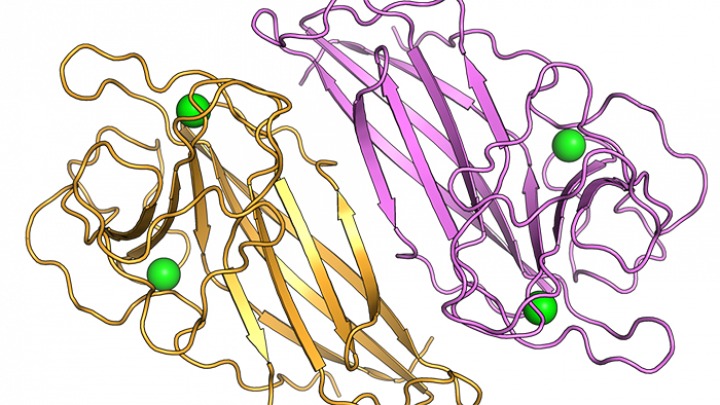
Enzyme's structure reveals how nature performs rare molecular transformations
Scientists at the University of Michigan Life Sciences Institute have discovered how one type of enzyme allows a microorganism to produce molecules with a wide range of potentially beneficial activities — from fighting insects to killing fungus.
Hapalindoles compose a large class of structurally diverse natural products made by cyanobacteria. Their structural diversity is reflected in the widely varying activities of the products, including antibacterial, antifungal and insecticidal activities.
Until recently, relatively little was known about how nature manages to develop these diverse organic compounds from the same starting material.
Now, researchers in the lab of David Sherman, Ph.D., at the LSI have shown that the various structural arrangements in this class all arise from a central starting point and all begin their transformations through a novel class of enzymes.
By solving the structure of an enzyme called a Stig (for Stigonemataceae) cyclase, the U-M researchers were able to determine how this class of enzymes gives rise to such a wide variety of molecular structures and biological activities.
'Almost no known instances'
The findings, published March 12 in Nature Chemical Biology, revealed that the enzyme is enabling a transformation that is often used in synthetic chemistry, but is almost "unprecedented" in nature, says Sean Newmister, Ph.D., a postdoctoral researcher in the Sherman lab and lead author on the study.
"The core framework for all of the various structures is coming through this enzyme," Newmister explains. "What makes these findings even more interesting is that the enzymatic transformation that takes place is extremely rare. There are almost no known instances of enzymes that do this type of chemistry."
Understanding the structure of this enzyme, and how it transforms basic molecular building blocks into useful compounds, is key to future efforts to harness the biological activity of these natural products and develop new products.
"Before we can design new biological catalysts, we need to understand their structure and mechanism," Newmister says. "In the Sherman lab, we're not only looking for new natural products, but also trying to understand how they're made."
Go to Article
Structural basis of the Cope rearrangement and cyclization in hapalindole biogenesis, Nature Chemical Biology. DOI: 10.1038/s41589-018-0003-x


